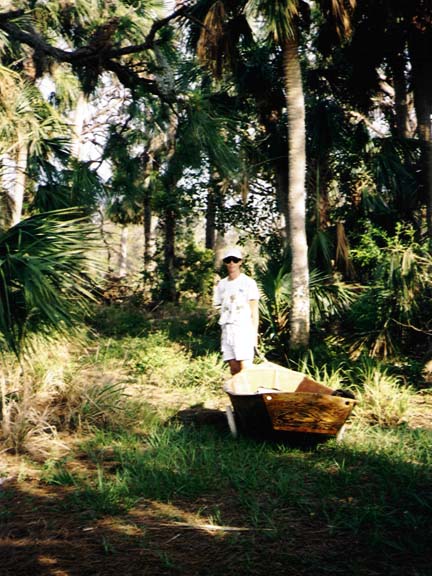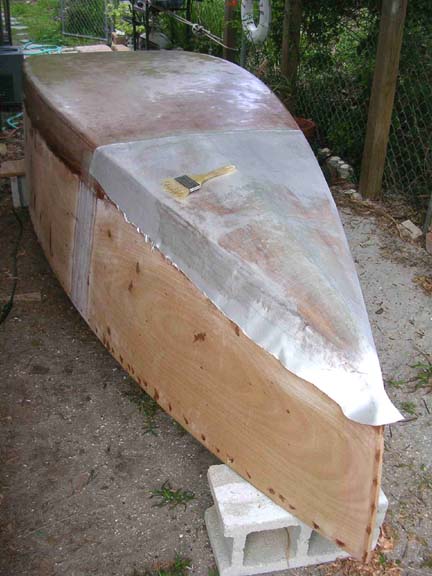
Happy Spring, here are some more shots of the boat. She's coming along well and my progress processing these photos is lagging behind actual construction. More to follow soon.
Applying second layer of 9-oz. tight weave fiberglass cloth with epoxy resin. 3 more layers of glass tape: 6", 4" and 2.5" wide, will follow along the chine joints. Chines are high-abuse areas (impact and abrasion), and need plenty of material. The weight is in the right place too:

Using masking tape to stick down 3-4 layers of fiberglass tape at the stem; note how the 9 oz. glass tape resists the tight bend. The masking tape's stickum releases easily from the cured epoxy. This technique also holds down the loose fibers at the edges, making sanding and fairing easier later:
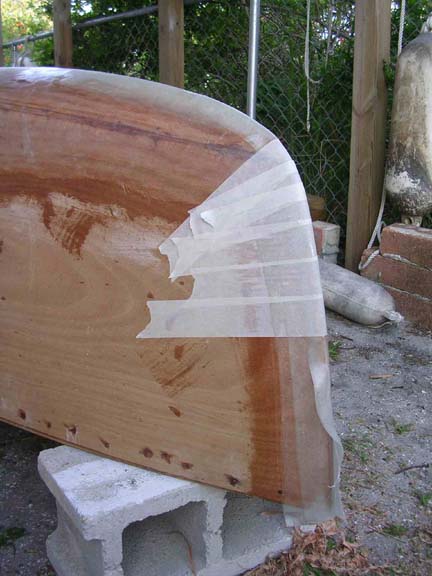
Gluing in deck beam and carlins in sudden rain squall (the odd assembly of recycle bins was thrown up hurriedly to keep rain from blowing in under the awning). Note temporary cross-brace amidships which holds gunwales and supports cockpit carlins:
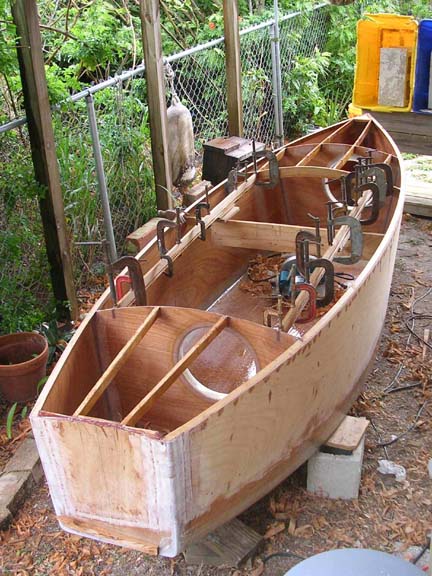
Temporary screws and a few clamps hold the roughly pre-fitted panels. Once the glue hardens the edges will be planed flush and the inside of the hull-to-deck joint fiberglassed across the triangular sheer batten:
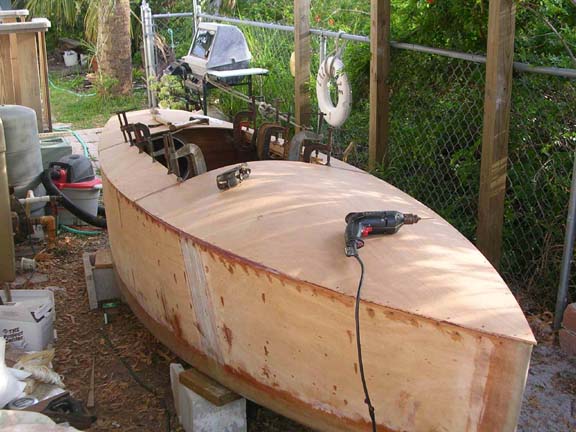
Ditto above:
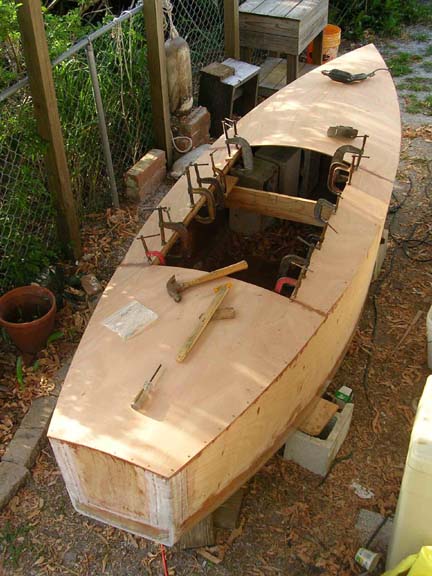
Applying 2 layers of 3.25-oz. glass to the sides and transom. The cloth laps over onto the deck to tie this joint together:
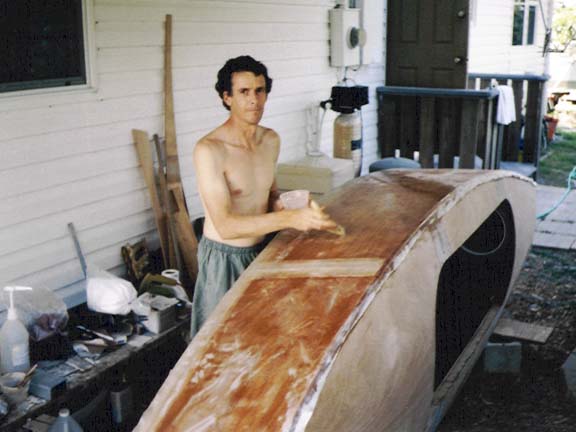
Taking a break. The savannas is a 15-mile long complex of freshwater marsh and interconnected lakes, accessible by foot trails and with no motors allowed. It's a 1/4-mile hike from the road, note removable wheels:
